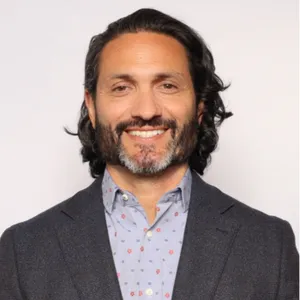
Leadership
There is no shortage of definitions of “leadership” on the internet, and in the thousands of books and articles published on the topic every year.
You’ll find everything from “motivating a group of people to act toward achieving a common goal” to “a process of social influence, which maximizes the efforts of others, towards the achievement of a goal” to “the capacity of a company's management to set and achieve challenging goals, take fast and decisive action when needed, outperform the competition, and inspire others to perform at the highest level they can.”
Of course, embedded in any definition of “leadership” are a set of assumptions, expectations, beliefs and world-views, most of which go unexamined and untested.
For example, it’s quite easy to spot some assumptions in the above definitions about the importance of “motivation”, and the leaders’ presumed job to motivate and inspire their people. A conclusion that you might come to, is that people are inherently un-motivated, and the charisma and “social influence” of the leader is what is required to drive action towards goals.
When we wrote this, we could not find a definition of leadership that captured the connection and impact we wanted to help create in the workplace (and really, beyond it). So, we created our own.
“Leaders take responsibility for themselves and their world.”
Let’s break down 'responsibility'
The conscious use of power
We’ve got a lot to say about the topic of power (and the conscious, intentional “right” use of it), but for now we’ll leave you with this: all roads lead to power. Whether we’re talking about employee engagement, conflict resolution, decision making, hiring and parting ways…you name it, every leadership activity is an act of power. To use power consciously is to understand that it's our impact that matters more than our intention.
Meaningful connection
Before we talk about trust and strategy and goals (and everything else that consumes our attention), we need to talk about connection and disconnection. Are team members connected to the vision and the values of the organization? Are they connected to each other? Are they connected to their own growth and learning? All of us have unique “connection” needs, and a leader’s job is to help their team members discover those needs, and help to meet them.
Positive action
Connection without action is a yin, looking for a yang. It’s true, teams exist to take action towards a shared goal. A purpose that is bigger than any one individual. If you’ve ever been on a team that has gotten stuck (or signed up for that committee that meets for the sake of it), you know what we’re talking about. When we’re talking about positive action, we’re talking about the impact-focused, human-centered, compassionate kind of action.
Better tomorrow
This, in a nutshell, is what gets us up in the morning. A better tomorrow for our clients, our partners, our families and community. Sometimes a better tomorrow means helping a local non-profit team feed hungry kids in innovative ways, or helping an already recognized and successful energy giant to continue to evolve their employee experience journey.
At the end of the day, leaders take responsibility for themselves, and the world in which they live. What better tomorrow are you and your team working towards?
